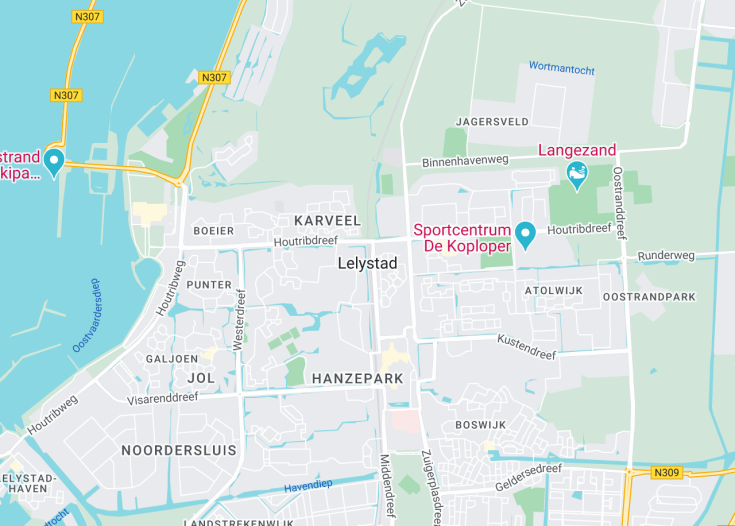Lelystad, the capital of Flevoland in the Netherlands, offers a unique blend of modern urban development and vast natural landscapes. Constructed on reclaimed land from the Zuiderzee, this city is a testament to Dutch engineering and environmental planning. Lelystad serves as a gateway to exploring the Oostvaardersplassen, a vast wetland reserve that’s abundant with flora and fauna. The city’s architectural highlights include the innovative Agora Theatre and the replica of the 17th-century ship Batavia. Lelystad’s blend of nature and modernity provides a distinctive travel experience, making it a fascinating destination for those interested in culture, history, and nature.
Before visiting Lelystad, check the local weather and pack accordingly, as the city’s coastal location can influence its weather patterns, ensuring you enjoy your exploration comfortably.
To fully appreciate Lelystad, consider renting a bike to explore its expansive nature reserves and modern architectural sites at your own pace.
Top things to do & see in Lelystad
Select the following sights and activities to discover best tickets and tours available in Lelystad.
Lelystad: Gateway to the New Land
| Country | Netherlands |
| Time in Lelystad | GMT+1 |
| Language spoken | Dutch |
| Population | 79,000 (based on the most recent data from the municipality records) |
| Currency | Euro (€, EUR) |
| Airports |
|
Lelystad, the capital of the Dutch province of Flevoland, is a testament to human ingenuity and a symbol of the Netherlands’ victory over the sea. Situated on land reclaimed from the IJsselmeer lake in the 1960s, Lelystad represents the sprawling spirit of modern Dutch urban planning. This city, named after Cornelis Lely — the visionary behind the Zuiderzee Works — features avant-garde architecture and is a hub for tourists given its scenic marinas and history. The Batavialand Museum and the replica of the 17th-century ship Batavia set in Lelystad are prominent spots that narrate the story of Dutch maritime prowess and reclamation efforts.
Where is Lelystad?
Lelystad is located in the central part of the Netherlands, lying in the province of Flevoland.
Distances:
| Route | Distance by car | Time by car |
|---|---|---|
| Amsterdam to Lelystad | 45 miles / 72 km | 1 hour |
| Utrecht to Lelystad | 52 miles / 84 km | 1 hour 10 minutes |
| Groningen to Lelystad | 101 miles / 162 km | 1 hour 45 minutes |
What is Lelystad famous for?
Lelystad is renowned for its unique role in the Netherlands, being constructed on reclaimed land, showcasing Dutch mastery in water management. It’s also known for its outdoor shopping center, Batavia Stad, and the historic ship Batavia.
History
1960s – The Birth of Lelystad
The story of Lelystad begins in the mid-20th century, emerging from the ambitious Zuiderzee project which aimed to tame the Zuiderzee, a wild and often perilous arm of the North Sea. As a result, vast new tracts of land were reclaimed, the largest of which is the Flevopolder where Lelystad is located. Officially established in 1967, Lelystad was named after Cornelis Lely, the visionary engineer behind the reclamation project. Initially, the town was planned as a nexus for water management and a hub for the burgeoning agriculture of the new lands.
1970s-1990s – Growth and Development
The following decades saw Lelystad evolve from a rudimentary town to a structured urban area. The 70s and 80s were marked by rapid residential development, aimed at accommodating the growing workforce involved in the development of the new provinces. By the 1990s, Lelystad had established its infrastructure, with schools, hospitals, and recreational facilities, shifting from a functional settlement into a lively community.
2000s – Present – Modernization and Cultural Expansion
In the 21st century, Lelystad has embraced modernization while cultivating a rich cultural scene. The addition of landmarks such as the avant-garde Agora Theatre and the Batavia Wharf, a historical shipyard with meticulously reconstructed 17th-century ships, reflect its diverse appeal. The city’s focus on sustainable development and green spaces echo the forward-thinking vision of its founders.
Visit Lelystad
What to see and do in Lelystad
Lelystad offers a mix of natural beauty and intriguing cultural attractions. Explore the Batavia Wharf, where the replica of the historic Batavia ship is docked. Dive into history at the National Aviation Museum Aviodrome, or enjoy the serene beauty of the Oostvaardersplassen, a unique nature reserve. For outdoor enthusiasts, Lelystad’s many cycling and hiking paths provide ample opportunities to explore the lush landscapes.
- National Aviation Museum Aviodrome
- Oostvaardersplassen Nature Reserve
- Batavia Wharf
- New Land Heritage Centre
- Lelystad’s Marina
Events in Lelystad
Lelystad hosts various cultural and recreational events throughout the year. The Batavia Wharf, for instance, holds the annual “Batavia Days,” celebrating maritime history with demonstrations and exhibitions, typically in June. The Lelystad Airshow, a spectacular event for aviation enthusiasts, takes place every September. Additionally, the city celebrates its anniversary with various activities and performances every September 28th, marking the day it was officially founded.
Best time to visit Lelystad
The best time to visit Lelystad is from late spring to early autumn, particularly between May and September. During these months, the weather is typically mild and conducive to outdoor activities, and many of the city’s events are taking place.
Is Lelystad worth visiting?
Lelystad is indeed worth visiting for both its historical significance and its natural beauties. The city offers a unique look into the Netherlands’ feats of engineering with its land reclamation history and provides a range of activities from cultural museums to expansive nature reserves. Whether you’re a history buff, nature lover, or just in search of a new place to explore, Lelystad presents a compelling destination that contrasts significantly with the more frequented tourist hubs of the Netherlands.










